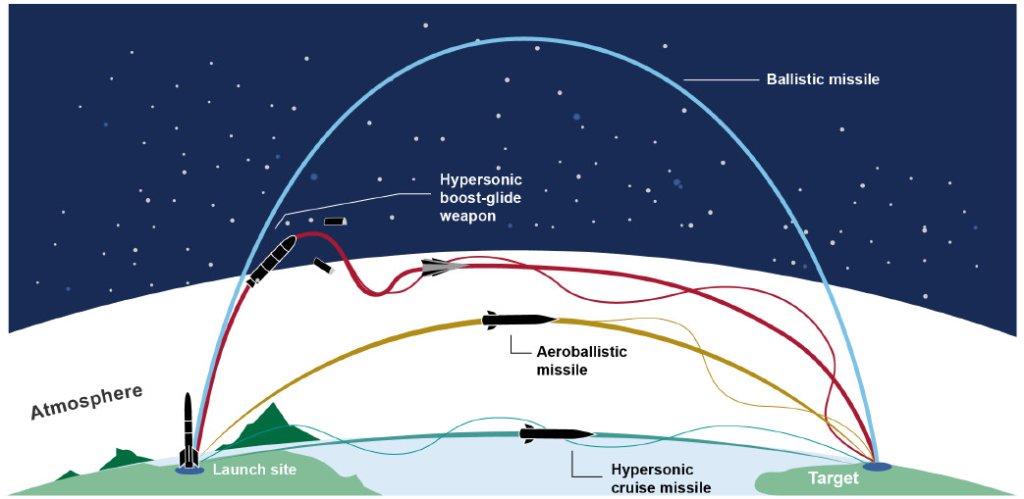
This is part of the “prompt strike” initiative trying to increase the speed of delivery of munitions operationally. It took two years of delays to have a first test launch in December 2024 (maybe, Pentagon is shady on launch date actual); The missile at the core of Dark Eagle, also known as the Long Range Hypersonic Weapon (LRHW), is the same one the Navy plans to arm its Zumwalt class stealth destroyers and future Block V Virginia class submarines with.
Here’s rudimentary graphic illustrating the parabolic differences between launch modes.
Why the Pentagon publishes milestones on these blue sky programs, I wonder at and I know they do so per Congressional pressure but this is yet another program where I suspect the concepts and requirements left of bang did not do their homework properly.
While firing a missile from the Dark Eagle launcher is a major milestone, the fact that it has only come now underscores the problems that have been dogging the system’s development for years. The Army scrubbed three planned launches last year. The Pentagon did announce a successful end-to-end common AUR test in June, but that had made use of a different ground-based launch apparatus.
https://www.twz.com/land/army-dark-eagle-hypersonic-missile-finally-blasts-out-of-its-launcher
Of course, the worm turns:
Following the apparent cancellation of the U.S. Air Force’s AGM-183A Air-launched Rapid Response Weapon (ARRW) program in 2023, it appeared that Dark Eagle would become the U.S. military’s first operational novel hypersonic weapon. At this stage, there’s still some uncertainty surrounding ARRW status and there could still be plans for a follow-on effort.
https://www.twz.com/land/pentagon-still-unsure-about-lethality-of-dark-eagle-hypersonic-missile
I have mentioned in my podcasts that the term “near peer” is no longer useful in any explanatory framework for 21st century warfare and this sort of marks that officially. All warfare on the conventional front are now peer competitors. I will forecast that the BRICS countries will start to pull ahead in these modes of missile delivery as the US acquisition system gyrates in bureaucratic red tape and the death spiral gyre of defense spending. Building these at scale and ensuring operational readiness in quantity in addition to all the teething problems of deployment puts these at least a decade out.
Conventional SLBMs or ICBMs may be much more effective than the hypersonic weapons the US is pursuing. Both in performance and cost. Especially if they are MIRV and/or MARV configurations. In the arcane specialty of building missiles, there is constant tension between Mach speed/velocity and the munitions payload because at a certain point, the increased speed obviates the need for an exploding warhead munition. To cause damage by kinetic energy alone you need mass and velocity. The hazard is mistaken identification of a nuclear armed launch BUT what if the increased speeds of munitions is making the “lethal payload” less important than the destructive energy release of terminal contact with the ground that creates near-nuclear effects with no residual radiation?
In the graphic above, natural space exposure requires very expensive onboard protection of electronics suites in the missile body the higher the parabolic path but the cruise & aeroballistic missiles don’t have those requirements (air-breathing) hence the increased common usage of these will put them in the hands of Third World armed forces (think Yemen and Armenia/Azerbaijan) in the next decade. If you survive until 2040, you will look back and be astonished at the changes in the ways of war.
Again, flattening and expanding the distribution curve to all armed combatants on Earth with these missile variants being able to destroy or neutralize very expensive exquisite platforms like carriers, surface ships and all manner of ground vehicles from manned to tanks to infantry fighting vehicles is here to stay.
Spicy times ahead.





























